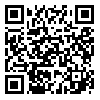1. James SL, Theadom A, Ellenbogen RG, Bannick MS, Montjoy-Venning W, Lucchesi LR, et al. Global, regional, and national burden of traumatic brain injury and spinal cord injury, 1990–2016: a systematic analysis for the global burden of disease study 2016. Lancet Neurol. 2019;18(1):56–87. [
DOI]
2. Rahimi-Movaghar V, Sayyah MK, Akbari H, Khorramirouz R, Rasouli MR, Moradi-Lakeh M, et al. Epidemiology of traumatic spinal cord injury in developing countries: a systematic review. Neuroepidemiology. 2013;41(2):65–85. [
DOI]
3. Carrard V, Kunz S, Peter C. Mental health, quality of life, self-efficacy, and social support of individuals living with spinal cord injury in Switzerland compared to that of the general population. Spinal Cord. 2021;59(4):398–409. [
DOI]
4. Azadmanjir Z, Jazayeri SB, Habibi Arejan R, Ghodsi Z, Sharif-Alhoseini M, Kheiri G, et al. The data set development for the National Spinal Cord Injury Registry of Iran (NSCIR-IR): progress toward improving the quality of care. Spinal Cord Ser Cases. 2020;6(1):17. [
DOI]
5. Besharat MA, Taheri M, Gholamali Lavasani M. Comparison of perfectionism, ego strength, anger, and anger rumination in individuals with major depression and obsessive-compulsive disorder. Culture Counseling. 2016;7(26):87–115. [Persian] [
Article]
6. Ghorbani N, Watson PJ, Bing MN, Davison HK, LeBreton D. Two facets of self-knowledge: cross-cultural development of measures in Iran and the United States. Genet Soc Gen Psychol Monogr. 2003;129(3):238–68.
7. Ghorbani N, Watson PJ, Farhadi M, Chen Z. A multi-process model of self-regulation: influences of mindfulness, integrative self-knowledge and self-control in Iran: multi-process model of self-regulation. Int J Psychol. 2014;49(2):115–22. [
DOI]
8. Besharat MA. Evaluation of psychometric properties of Ego Strength Scale. Research Report. University of Tehran; 2007. [Persian]
9. Kornhaber R, Mclean L, Betihavas V, Cleary M. Resilience and the rehabilitation of adult spinal cord injury survivors: a qualitative systematic review. J Adv Nurs. 2018;74(1):23–33. [
DOI]
10. Rahmani Rasa A, Hosseini SA, Haghgoo H, Khankeh HR, Khankeh HR, Ray GG. Aspects related to resilience in people with spinal cord injury. J Rehabil. 2016;17(4):350–9. [Persian] [
DOI]
11. Baker FA, Tamplin J, Rickard N, Ponsford J, New PW, Lee YEC. A therapeutic songwriting intervention to promote reconstruction of self-concept and enhance well-being following brain or spinal cord injury: pilot randomized controlled trial. Clin Rehabil. 2019;33(6):1045–55. [
DOI]
12. Ghorbani N, Cunningham CJL, Watson PJ. Comparative analysis of integrative self-knowledge, mindfulness, and private self-consciousness in predicting responses to stress in Iran. Int J Psychol. 2010;45(2):147–54. [
DOI]
13. Wilson TD, Dunn EW. Self-knowledge: its limits, value, and potential for improvement. Annu Rev Psychol. 2004;55(1):493–518. [
DOI]
14. Besharat MA. Evaluating the effectiveness of paradox therapy for the treatment of social anxiety disorder: a case study. The Journal of Psychological Science. 2019;18(76):383–95. [Persian] [
Article]
15. Besharat MA. Evaluating the effectiveness of paradox therapy for the treatment of obsessive-compulsive disorder: a case study. Journal of Psychological Studies. 2019;14(4):7–36. [Persian] [
Article]
16. Besharat MA. Paradox+barnameye zamani= modele kamele zoj darmani be raveshe PTC [Paradox + Schedule = Treatment: The complete model of couple therapy by PTC]. Tehran: Roshd Publication; 2017. [Persian]
17. Glasser W. Reality therapy: a new approach to psychiatry. New York: Harper Collins e-books; 2010.
18. Karimyar Jahromi M, Mosallanejad L. The impact of reality therapy on metacognition, stress and hope in addicts. Glob J Health Sci. 2014;6(6):281. [
DOI]
19. Robey P, Burdenski TK, Britzman M, Crowell J, Cisse GS. Systemic applications of choice theory and reality therapy: an interview with Glasser scholars. The Family Journal. 2011;19(4):427–33. [
DOI]
20. Hasanzadeh Pashang S, Zare H, Alipor A. The efficacy of stress inoculation training (SIT) on resilience, anxiety, depression and stress among spinal cord injury (SCI) patients. Journal of Jahrom University of Medical Sciences. 2012;10(3):15–26. [Persian] [
DOI]
21. Baran Oladi S, Shykhpoor N, Mortazavi SM, Sabahi A. The effect of group logotherapy on hopeness in spinal cord injury patient. Knowledge and Research in Applied Psychology. 2018;19(2):97–105. [Persian] [
Article]
22. Ebrahimi Z. Asar bakhshi gorouh darmani shenakhti-raftari bar afsordegi mardan mobtala be zaye’aate nokhaei [The effectiveness of cognitive-behavioral group therapy on depression in men with spinal cord injuries]. Journal of Psychology New Ideas. 2020;5(9):1–11. [Persian] [
Article]
23. Glasser W. Reality therapy in action. New York: HarperCollins; 2000.
24. Moshirian Farahi SM, Moshirian Farahi SMM, Aghamohammadian Sharbaf HR, Sepehri Shamloo Z. The effectiveness of group reality therapy based on choice theory on quality of life in people with aggression. Iranian Journal of Psychiatric Nursing. 2017;5(1):47–53. [Persian] [
DOI]
25. IBM Support. Repeated measures ANOVA: interpreting a significant interaction in SPSS GLM [Internet]. Armok, NY: IBM Corp; 2020.
26. Lenhard W, Lenhard A. Calculation of effect sizes. Dettelbach (Germany): Psychometrica; 2016. [
Article]
27. Soleimani Z, Ghaffari M, Baezzat F. The effectiveness of reality group therapy on academic vitality in students with specific learning disorder. Journal of Learning Disabilities. 2017;7(1):136–42. [Persian] [
Article]
28. Farshchi N, Kiani Q, Chiti H. Effectiveness of group therapy reality in reducing depression, anxiety and increased compliance to treatment in patients with diabetic type 1. J Adv Med Biomed Res. 2018;26(117):74–85. [Persian] [
Article]
29. Letzring TD, Block J, Funder DC. Ego-control and ego-resiliency: generalization of self-report scales based on personality descriptions from acquaintances, clinicians, and the self. J Res Pers. 2005;39(4):395–422. [
DOI]
30. Nicholls E, Lehan T, Plaza SLO, Deng X, Romero JLP, Pizarro JAA, et al. Factors influencing acceptance of disability in individuals with spinal cord injury in Neiva, Colombia, South America. Disability and Rehabilitation. 2012;34(13):1082–8. [
DOI]





